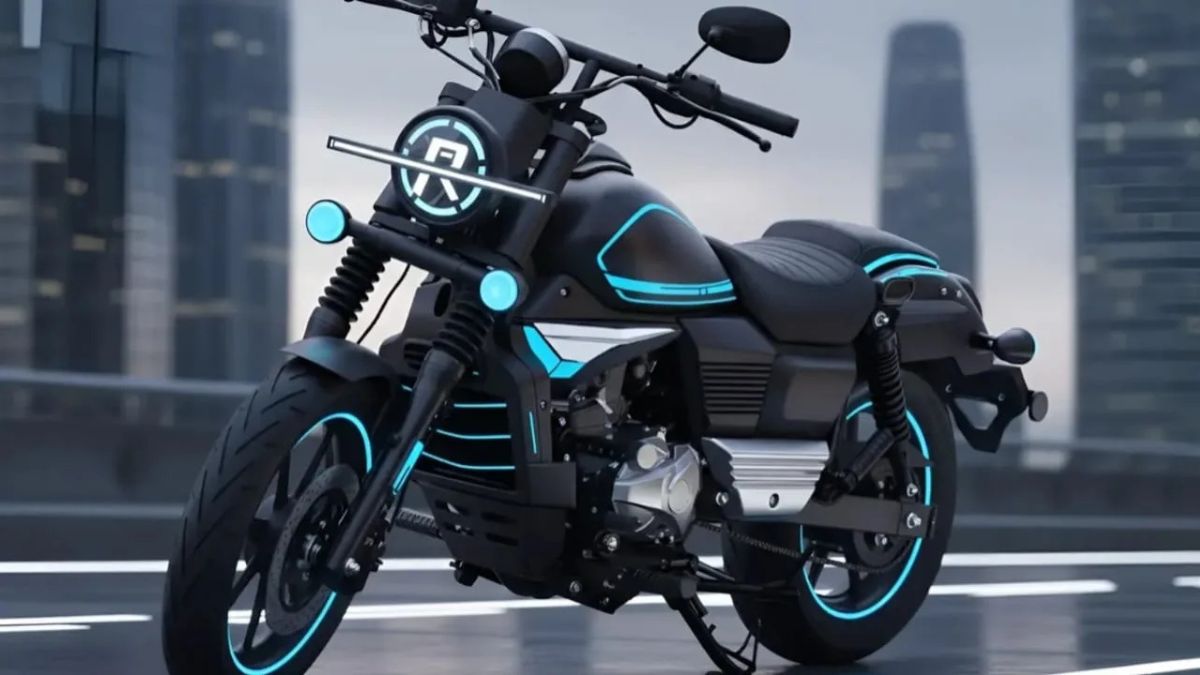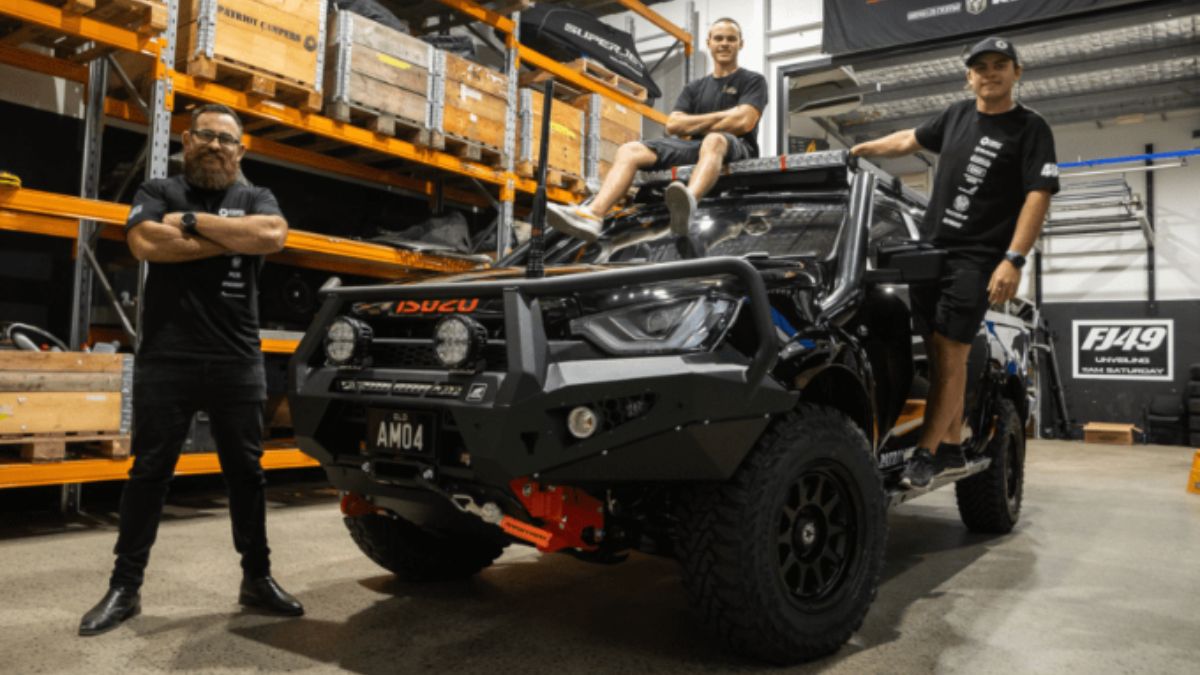AUTOMOTIVE
Tips for Negotiating the Most Advantageous Price at a Ford Dealership

Negotiating a vehicle price can often feel daunting, especially at a large dealership like Ford, where many factors influence the final cost. Securing a fair deal requires preparation, confidence, and a clear understanding of how dealership pricing works. Whether you’re purchasing a new Ford model or a certified pre-owned vehicle, knowing how to approach negotiations can save you significant money and frustration. We will explore practical tips that empower you to engage confidently with sales representatives, helping you secure a price that reflects both market value and your budget without compromising on quality or features.
Effective Strategies for Negotiating at a Ford Dealership
-
Do Thorough Research Before Visiting the Dealership
Preparation is essential when entering negotiations at a Ford dealership. Start by gathering detailed information about the vehicle models you are interested in, including their manufacturer’s suggested retail price (MSRP), invoice price, and any ongoing promotions or incentives. Use reputable online resources to compare prices of cars for sale across different dealerships in your area to understand the typical market range. Additionally, familiarize yourself with the vehicle’s features, safety ratings, and fuel economy to ensure you know exactly what you’re getting for your money. Being informed puts you in a strong position to spot inflated prices and identify reasonable offers. This research also helps you avoid being swayed by aggressive sales tactics and keeps the conversation grounded in facts.
-
Understand Your Financing Options and Credit Situation
Before stepping onto the dealership lot, take a moment to evaluate your financing options. Check your credit score and consider obtaining pre-approval for a loan through your bank or credit union. Having a pre-approved loan in hand not only provides a clear budget limit but also strengthens your bargaining position, as you can negotiate as a cash buyer without being dependent on dealership financing. Dealerships often attempt to increase their profit by adjusting loan terms, so knowing your options prevents surprises. Moreover, understanding interest rates and loan durations helps you negotiate the total cost of the vehicle, rather than focusing solely on the monthly payment, which can be misleading.
-
Schedule Your Visit Toward the End of the Month or Quarter
Timing your visit strategically can have a significant impact on the deal you receive. Dealerships frequently operate with monthly or quarterly sales targets, and salespeople may be more willing to negotiate as these deadlines approach to meet their goals. Visiting toward the end of these periods increases the likelihood that you will encounter a motivated salesperson willing to offer more attractive pricing or incentives. Keep in mind that weekends or holidays may experience higher customer traffic and less flexibility, so mid-week visits offer a calmer environment and more personalized attention. While timing alone won’t guarantee a better price, combined with other negotiation tactics, it can improve your chances of securing favorable terms.
-
Be Ready to Walk Away
One of the most powerful negotiating tools is the willingness to leave the deal if terms don’t meet your expectations. Sales representatives recognize that a buyer who appears too eager or desperate to purchase loses leverage. Demonstrating patience and a readiness to explore other dealerships or wait for better offers signals that you value your investment and are not rushing into a decision. Walking away can sometimes prompt the salesperson to reconsider their offer or involve a manager to provide additional discounts. Remember, the vehicle market is competitive, and there is no shortage of options. Maintaining control of the situation by setting clear boundaries on what you’re willing to pay keeps negotiations balanced and fair.
-
Negotiate Price Before Discussing Trade-Ins or Financing
When you have a trade-in vehicle or require dealership financing, it’s essential to separate these components during the negotiation process. Start by agreeing on the purchase price of the new vehicle before introducing your trade-in or financing needs. Mixing these discussions can obscure the actual price and make it difficult to determine if you are getting a fair deal on either transaction. Dealers may offer attractive trade-in values, but they often increase the new vehicle’s price or vice versa. By isolating each negotiation, you maintain transparency and clarity, which helps you evaluate the fairness of each element individually and avoid being misled by bundled offers.
-
Ask About Additional Fees and Documentation Charges
Beyond the sticker price, dealerships often include various fees such as documentation fees, destination charges, and preparation costs. These additional costs can add hundreds or even thousands to your final bill if you are not aware of them upfront. Make it a point to request a full breakdown of all fees before agreeing to any deal. Understanding which fees are mandatory and which ones might be negotiable allows you to address unnecessary charges directly. Some dealerships may be willing to waive or reduce certain fees to close the sale, so don’t hesitate to inquire. Transparency in this area ensures that there are no unpleasant surprises during the final paperwork phase.
Negotiating a vehicle price at a Ford dealership requires a mix of preparation, strategy, and confidence. Researching the market, understanding financing, and timing your visit lay a strong foundation. Keeping negotiations transparent by separating price discussions from trade-ins and financing prevents confusion. Being willing to walk away and asking about all fees protects you from overpaying. Leveraging available incentives and bringing a trusted companion can further enhance your negotiating position. By applying these approaches, you will navigate the process with greater assurance and secure a deal that reflects true value and aligns with your financial goals.
AUTOMOTIVE
Rajdoot 350: A Journey Through History and Design

Introduction to Rajdoot 350
The Rajdoot 350 is more than just a motorcycle; it’s a symbol of freedom, adventure, and nostalgia. For many, it represents the quintessential Indian biking experience. With its robust design and powerful engine, this classic bike has left an indelible mark on the hearts of riders across generations. Whether you’re a seasoned biker or someone who appreciates vintage machines, there’s something about the Rajdoot 350 that draws people in.
This iconic machine carries with it stories of journeys taken along winding roads and memories forged in motion. As we delve into the history, features, and cultural impact of the Rajdoot 350, prepare to embark on a ride through time—a journey that encapsulates not only technical prowess but also emotional resonance within India’s motorcycling landscape. Let’s explore what makes this bike truly legendary!
The History of Rajdoot 350
The Rajdoot 350, a legendary motorcycle in Indian history, first rolled out in the late 1960s. It was manufactured by Escorts Group under collaboration with Yamaha. This partnership birthed a bike that combined Japanese engineering with Indian ingenuity.
Initially designed for rugged terrains, it quickly gained popularity among enthusiasts. Its robust build and powerful engine made it ideal for long rides and rough roads. The distinctive design featured a classic round headlamp and a prominent fuel tank, embodying the spirit of adventure.
Throughout its production years, from the 1970s to the early 1990s, Rajdoot became synonymous with freedom on two wheels. Riders cherished their journeys on this iconic machine as it carved its niche in Indian motorcycling folklore.
Not just transportation, owning a Rajdoot symbolized status for many during its heyday. The nostalgic roar of its engine remains etched in memories even decades later.
Features and Design of the Bike
The Rajdoot 350 boasts an iconic design that effortlessly blends classic and rugged aesthetics. Its robust frame, combined with a comfortable upright seating position, makes it perfect for both city rides and long journeys.
One of its standout features is the vintage-style round headlamp, which adds to its charm while providing excellent illumination. The simple yet functional instrument cluster offers essential information without overwhelming the rider.
With a powerful 350cc engine under its tank, this bike delivers impressive torque and performance. Riders appreciate the distinctive thump of the exhaust note—a sound that resonates deeply within Indian biking culture.
Additionally, the sturdy suspension system contributes to a smooth ride on varied terrains. The overall build quality reflects durability, making it a trusted companion for enthusiasts who value reliability alongside style.
Popularity and Impact on Indian Motorcycling Culture
The Rajdoot 350 holds a special place in the hearts of Indian bikers. Launched in the late 1970s, this motorcycle quickly became an icon. Its rugged design and powerful engine appealed to those seeking adventure on two wheels.
Riders admired its reliability across diverse terrains—from bustling city streets to challenging rural roads. The bike’s robust build made it perfect for long journeys, fostering a culture of exploration among motorcyclists.
Rajdoot’s unique presence was often felt during group rides and rallies. It became a symbol of camaraderie among enthusiasts who shared stories and experiences centered around their beloved machines.
Even today, the Rajdoot 350 inspires nostalgia, reminding many of their youth spent cruising through scenic routes. Its impact is evident in how it shaped attitudes toward biking as not just transportation but also as a lifestyle choice intertwined with freedom and passion.
Modern-Day Revival and Modifications
The Rajdoot 350 has seen a remarkable resurgence in recent years. Enthusiasts and collectors are breathing new life into this classic motorcycle, ensuring its legacy continues.
Modifications play a crucial role in the revival. Riders customize their bikes with modern technology while retaining the iconic essence of the original design. Upgraded suspensions, improved brakes, and fuel injection systems enhance performance significantly.
Aesthetic modifications are equally popular. Vintage paint jobs and retro accessories give each bike a unique personality. Custom exhausts add a distinct sound that echoes nostalgia on every ride.
Communities have sprung up around these motorcycles, fostering camaraderie among owners. Events dedicated to showcasing modified Rajdoots attract large crowds eager to celebrate this cultural icon.
The combination of tradition and innovation ensures that the Rajdoot 350 remains relevant today while paying homage to its rich history.
The Future of Rajdoot 350
The future of the Rajdoot 350 looks promising, especially with the rising interest in retro bikes. As motorcycle enthusiasts seek nostalgia combined with modern technology, this classic model has a unique position.
Potential collaborations between manufacturers and custom builders could bring fresh designs to life. Electric versions might also emerge, merging traditional aesthetics with eco-friendly innovations.
Social media platforms are buzzing with Rajdoot fan groups sharing restoration projects and modifications. This community-driven passion ensures that the spirit of the bike remains alive.
As vintage motorcycles gain traction among younger riders, we may see a resurgence in popularity for models like the Rajdoot 350.
Restorations and modifications will keep its legacy vibrant while attracting new fans who appreciate its history and design ethos. The journey isn’t over; it’s evolving into something exciting for both old-timers and newcomers alike.
Conclusion
The Rajdoot 350 stands as a testament to the rich history and culture of Indian motorcycling. Its journey began in the early 1970s, captivating generations with its robust design and powerful performance. This iconic bike not only shaped personal experiences but also influenced an entire community of riders.
With its vintage charm and unique features, such as the distinctive barrel-shaped fuel tank and comfortable seating, the Rajdoot 350 remains a favorite among enthusiasts. The impact it has had on India’s biking landscape is undeniable; it evokes nostalgia for many while inspiring new riders to explore their passion for motorcycles.
Today, we see a revival of interest in classic bikes like the Rajdoot 350. Modern modifications breathe new life into this legendary machine without compromising its original spirit. Riders are customizing their Rajdoots, blending contemporary technology with classic aesthetics.
Looking ahead, the future seems bright for the Rajdoot 350. As more people discover or rediscover this iconic model, there’s potential for collaborations that honor its legacy while appealing to newer audiences. The passion surrounding this motorcycle ensures that it will continue to be celebrated both on roads and within communities dedicated to preserving India’s motoring history.
The story of the Rajdoot 350 is far from over; it’s an ongoing journey filled with adventure, camaraderie, and love for riding—a narrative etched into every kilometer traveled by those who choose to mount this remarkable machine.
AUTOMOTIVE
Drive Further, Sound Better: How the Torqit Exhaust Works on Australian Roads

For many Australians who love to drive, the journey is just as essential as the destination. It doesn’t matter if you’re hauling a caravan, exploring the bush, or going for a run along the coast; performance and dependability are important. The Torqit exhaust is what you need. It gives you more power, greater sound, and is engineered to last in Australian weather.
Not Just Noise
It’s not about making your 4WD noisier when you upgrade your exhaust; it’s about unlocking performance. The Torqit exhaust system is made to enhance airflow, which makes it easier for your engine to breathe and operate better. That implies more torque, smoother acceleration, and a big difference while hauling or going up steep hills.
Many drivers also say that their gas mileage gets better after the change. Your engine uses less gas to do the same task when it doesn’t have to work as hard. That means more kilometres from each tank and less stress for your car over time.
And then there’s the noise. You know your car is performing at its best when you hear that deep, polished note. It’s not too much; it’s just a confident growl that sounds good on any well-tuned 4WD.
Made to Work Well in a Tough Australian Climate
Anyone who has ever driven off-road knows that Australia can be tough. A vehicle gets worn down by heat, dust, salinity, and rough ground. The Torqit exhaust is made to withstand that, with stainless steel parts that are made for severe conditions where dependability is key.
Even after years of usage, the materials used to make each system are high quality and won’t rust or crack. They are also straightforward to put together because they come with precise fittings that fit a lot of common 4WD vehicles.
A Must-Have for People Who Love Road Trips
Australians love to embark on road trips, whether they are short getaways or long trips across the country. The appropriate setup can make the difference between a smooth trip and one that is full of problems.
The Torqit exhaust not only makes your car run better, but it also makes you feel good about how well it can handle anything that comes along on the road. The difference is clear, whether you’re towing the camper or driving up and down twisty mountain roads.
This kind of improvement goes well with travel ideas like RV Patrick’s tips for your next road trip, which say that being ready and having the right gear makes the trip go more smoothly.
Performance and Peace of Mind Go Hand in Hand
We create and test every system in Australia to make sure it works well in that country. Torqit systems work where other systems might not, whether you’re driving through the heat of the desert, the humidity of the coast, or the mud of the bush.
When you add in a promise of high-quality manufacture and local customer service, it’s simple to see why so many Australian 4WD fans trust Torqit.
How to Drive the Right Way
No matter how amazing your setup is, you should always drive safely first. Knowing the rules of the road in Australia helps keep everyone safe, especially when driving long distances. When you’re driving a lot of kilometres, things like speed limits, how to deal with fatigue, and how to pass other cars are just as crucial as how well your car works.
What Makes Torqit Different
Torqit gives you what you need most: power, sound, and durability. Whether you’re looking for adventure in the outback or just want your daily commute to feel a bit more polished, Torqit has you covered.
AUTOMOTIVE
Top 5 Benefits of Stabilitrak for Everyday Drivers

Imagine gliding down the highway, confident and in control, even when the weather turns unpredictable. This is not just a dream; it’s the reality for many everyday drivers thanks to Stabilitrak. This cutting-edge technology has revolutionized driving safety and performance, making our roads safer one journey at a time. Whether you’re navigating through rain-soaked streets or taking sharp corners with ease, understanding how Stabilitrak works can transform your driving experience. Let’s delve into the top five benefits of this remarkable system that every driver should know about!
What is Stabilitrak and How Does It Work?
Stabilitrak is a sophisticated electronic stability control system designed to enhance vehicle safety and handling. Developed by General Motors, it works by monitoring the driver’s steering input and comparing it to the vehicle’s actual motion.
When Stabilitrak detects a loss of traction or an imminent skid, it automatically applies brakes to individual wheels. This corrective action helps steer the car back onto its intended path, preventing potential accidents.
The system uses various sensors that track wheel speed, lateral acceleration, and yaw rates. By analyzing this data in real time, it can make split-second adjustments that keep drivers safe during challenging conditions.
In essence, Stabilitrak acts as an invisible co-pilot. It ensures you stay on course when faced with slippery roads or sharp turns—giving you peace of mind every time you hit the road.
Increased Safety on the Road
Stabilitrak significantly enhances safety for everyday drivers. It continuously monitors your vehicle’s movement and adjusts accordingly, ensuring that you stay on track.
When a sudden turn or slippery surface challenges control, Stabilitrak kicks in. It uses advanced sensors to detect loss of traction and helps correct it by applying brakes to individual wheels. This means fewer skids and spins, especially in adverse weather conditions.
The technology is particularly beneficial during unexpected scenarios like sharp turns or quick lane changes. With Stabilitrak engaged, even novice drivers can feel more confident behind the wheel.
Accidents often occur due to oversteering or understeering; however, this system reduces those risks effectively. Knowing that your vehicle has an extra layer of protection allows you to focus more on the road ahead rather than worrying about potential hazards.
Improved Handling and Control
Stabilitrak significantly enhances handling and control in various driving scenarios. This system continuously monitors vehicle dynamics, adjusting power distribution as needed.
When cornering or navigating tricky roads, Stabilitrak helps maintain your intended path. It reduces the chances of skidding or losing grip on slippery surfaces.
The real-time adjustments provide a sense of confidence for drivers. You can tackle sharp turns with more assurance, knowing your vehicle is working to keep you safe.
This technology also supports smoother acceleration during merging or passing maneuvers. Drivers experience less wheel slip and improved responsiveness when they need it most.
Whether you’re commuting through city streets or cruising along winding country roads, Stabilitrak ensures that every turn feels stable and secure. Embracing this feature might just transform how you approach your daily drives.
Enhanced Traction in Different Driving Conditions
Stabilitrak significantly improves traction, especially in challenging driving conditions. Whether you’re navigating through rain-soaked streets or tackling winter’s icy patches, this system is a game changer.
It works by monitoring your vehicle’s movement and adjusting power distribution as needed. If it detects any loss of grip, Stabilitrak kicks in to help maintain stability and control.
This feature provides confidence when cornering or during sudden maneuvers. Drivers can feel more secure knowing their vehicle is equipped to handle unexpected changes on the road.
Additionally, Stabilitrak aids those who drive on unpaved surfaces. It helps optimize tire performance, allowing for better grip on loose gravel or dirt roads.
With enhanced traction from this technology, everyday drivers can navigate various terrains with ease. It’s all about making every journey safer and smoother.
Better Fuel Efficiency
One of the often-overlooked benefits of Stabilitrak is its impact on fuel efficiency. By enhancing vehicle stability, it allows drivers to maintain optimal control without overexerting the engine.
When you navigate sharp turns or uneven terrain, your car’s systems work in harmony. This reduces unnecessary acceleration and braking, which can waste fuel.
With Stabilitrak actively managing traction and handling, you may notice improved performance during everyday driving conditions. The system fine-tunes how power is distributed across wheels based on road conditions.
In essence, a smoothly operating vehicle consumes less energy. This translates into better mileage for daily commutes or long road trips alike.
By investing in a vehicle equipped with Stabilitrak technology, you’re not just improving safety; you’re also making strides toward more economical driving habits that benefit your wallet and the environment.
Cost Savings on Repairs and Maintenance
Stabilitrak technology can lead to significant cost savings for everyday drivers. By enhancing vehicle stability and control, it helps prevent accidents that could result in costly repairs.
When your car maintains better traction and handling, the chances of wear on critical components decrease. This means fewer trips to the mechanic for issues related to alignment or suspension, which can be expensive over time.
Moreover, Stabilitrak can extend the lifespan of tires by reducing uneven wear caused by skidding or loss of traction. Investing in this system not only protects you while driving but also ensures that maintenance costs remain manageable.
With fewer repairs needed due to accident-related damages, you save both money and stress. Taking care of your vehicle becomes simpler when advanced technology like Stabilitrak is involved.
Conclusion
Stabilitrak is more than just a feature; it’s an essential safety tool for everyday drivers. By improving vehicle control and handling, it helps you navigate challenging conditions with ease. The enhanced traction it provides can make a significant difference in wet or icy weather, reducing the chances of skidding or losing control.
Moreover, Stabilitrak contributes to better fuel efficiency by optimizing power distribution during various driving scenarios. This not only saves you money at the pump but also minimizes wear and tear on your vehicle. With its ability to help prevent accidents, this system may lead to substantial savings on repairs and maintenance over time.
For anyone looking to boost their driving experience while ensuring safety and cost-effectiveness, investing in a vehicle equipped with Stabilitrak is wise. Embrace these benefits today for a smoother ride tomorrow.
-

 TECHNOLOGY5 months ago
TECHNOLOGY5 months agoTop 10 Must-Read Stories from Kristen Archives You Can’t Miss
-

 TECHNOLOGY11 months ago
TECHNOLOGY11 months agoSky Bri Net Worth Revealed: How She Built Her Financial Empire
-

 TOPIC1 year ago
TOPIC1 year agoBasement Renovation Contractors: How They Tackle Structural Issues During Renovations
-

 TOPIC7 months ago
TOPIC7 months ago5 Reasons the //Vital-Mag.Net Blog Dominates Lifestyle
-

 TOPIC6 months ago
TOPIC6 months agoTop 10 Articles from the ://Vital-Mag.net Blog That You Can’t Miss
-

 CRYPTO9 months ago
CRYPTO9 months agoCrypto30x.com Review: Is It the Right Platform for You?
-

 BUSINESS5 months ago
BUSINESS5 months agoTraceLoans Explained What You Need to Know
-

 ENTERTAINMENT3 months ago
ENTERTAINMENT3 months agoNHentai.NEF: Navigating the Popular Hentai Archive with Ease
